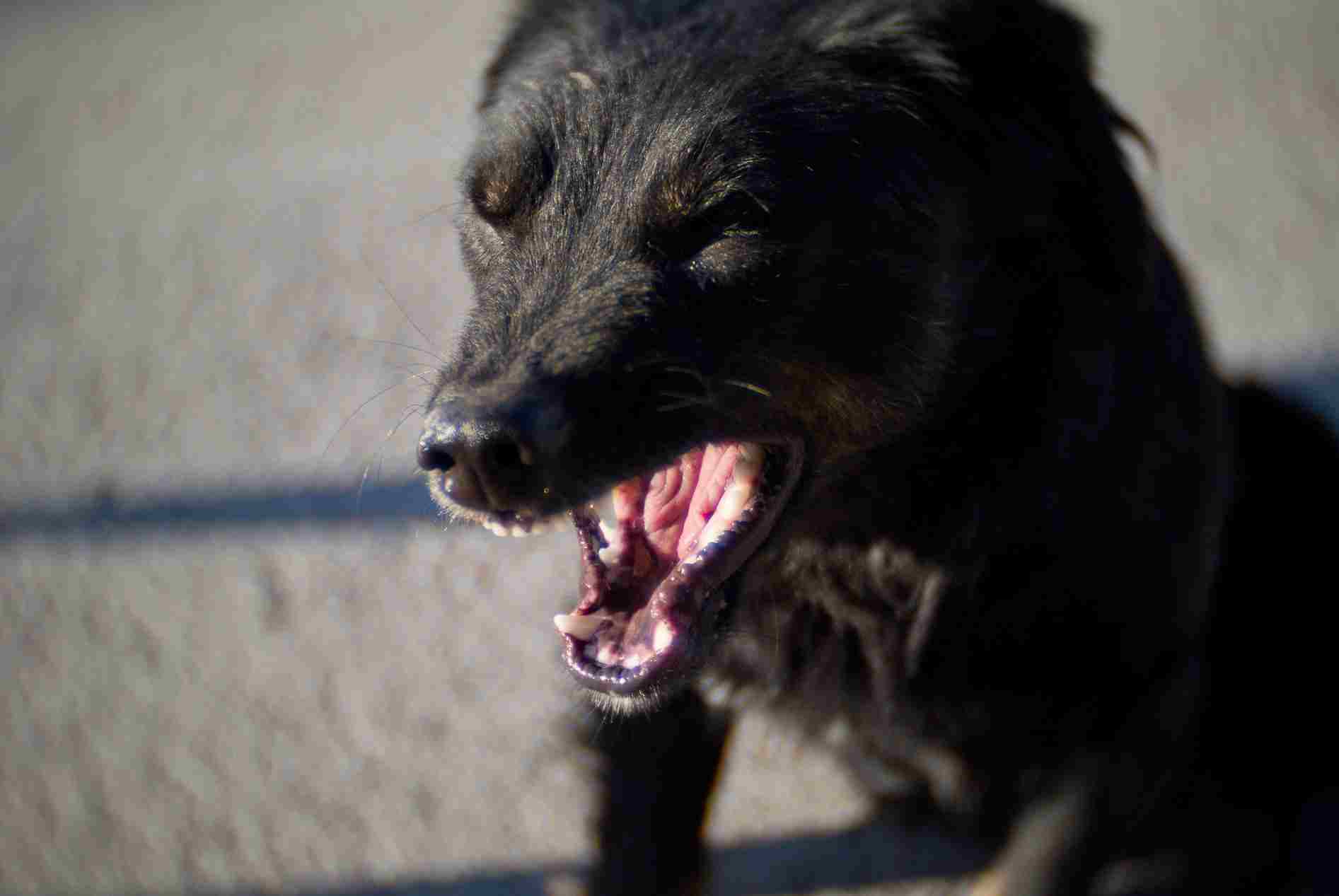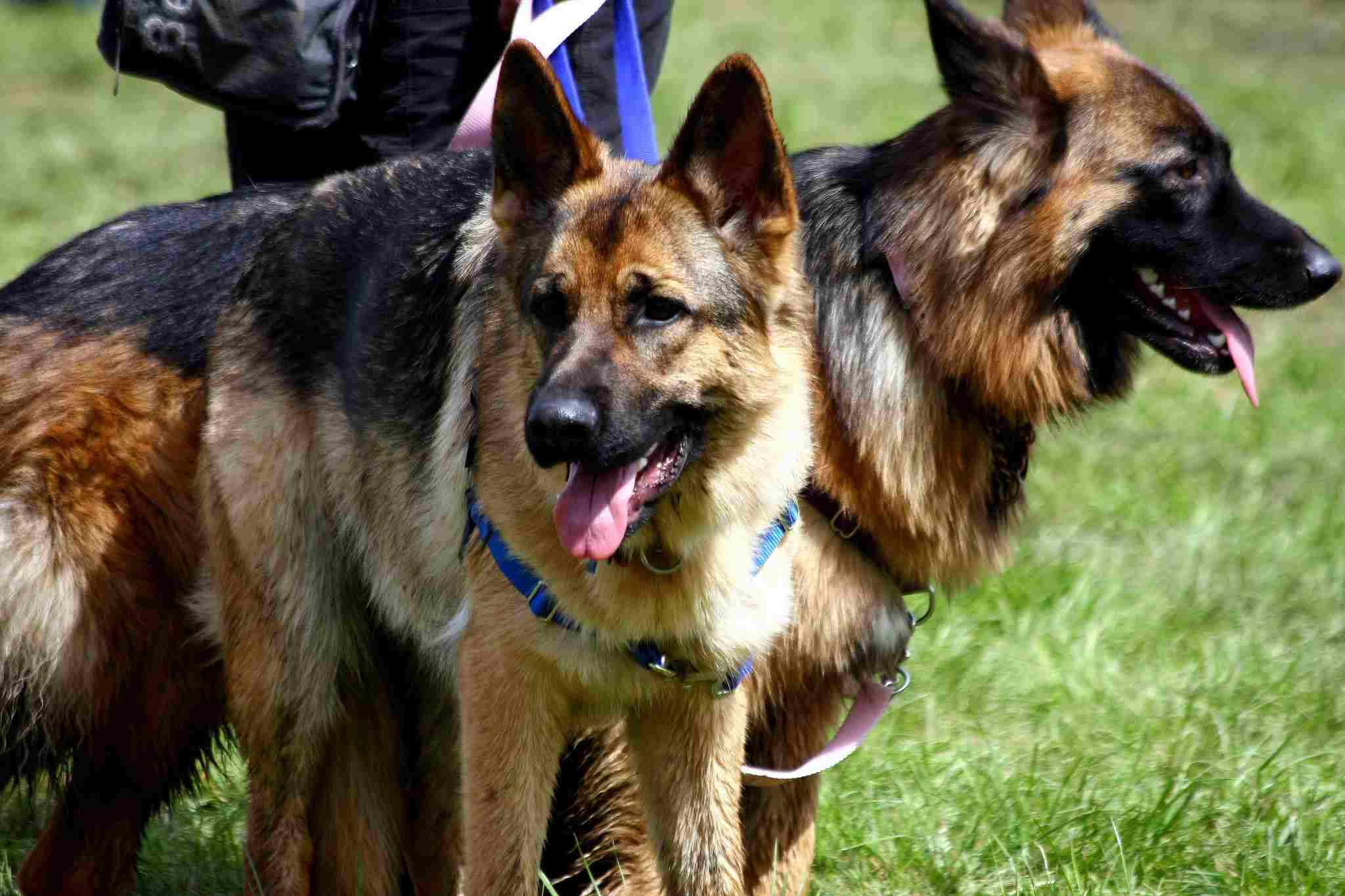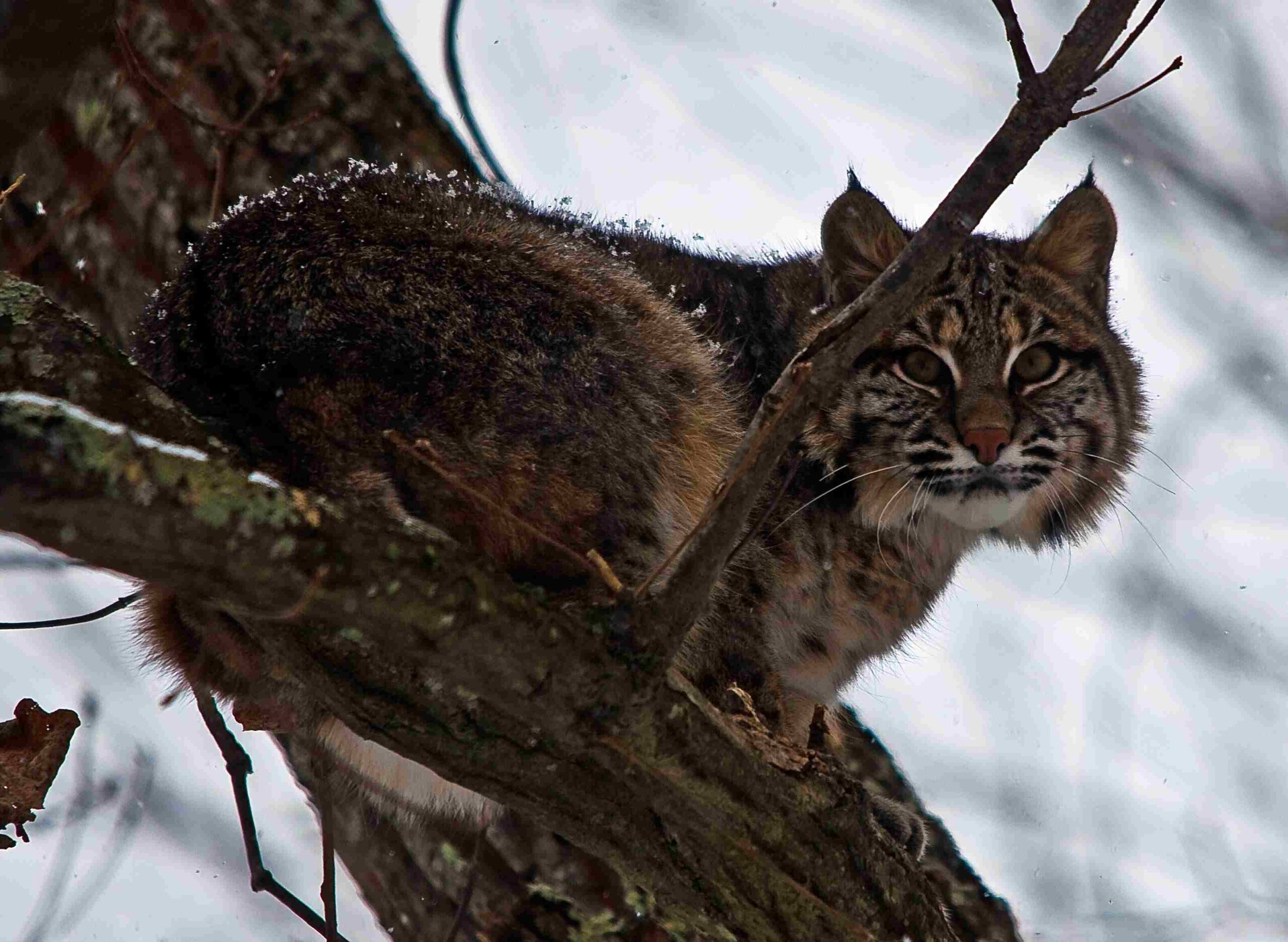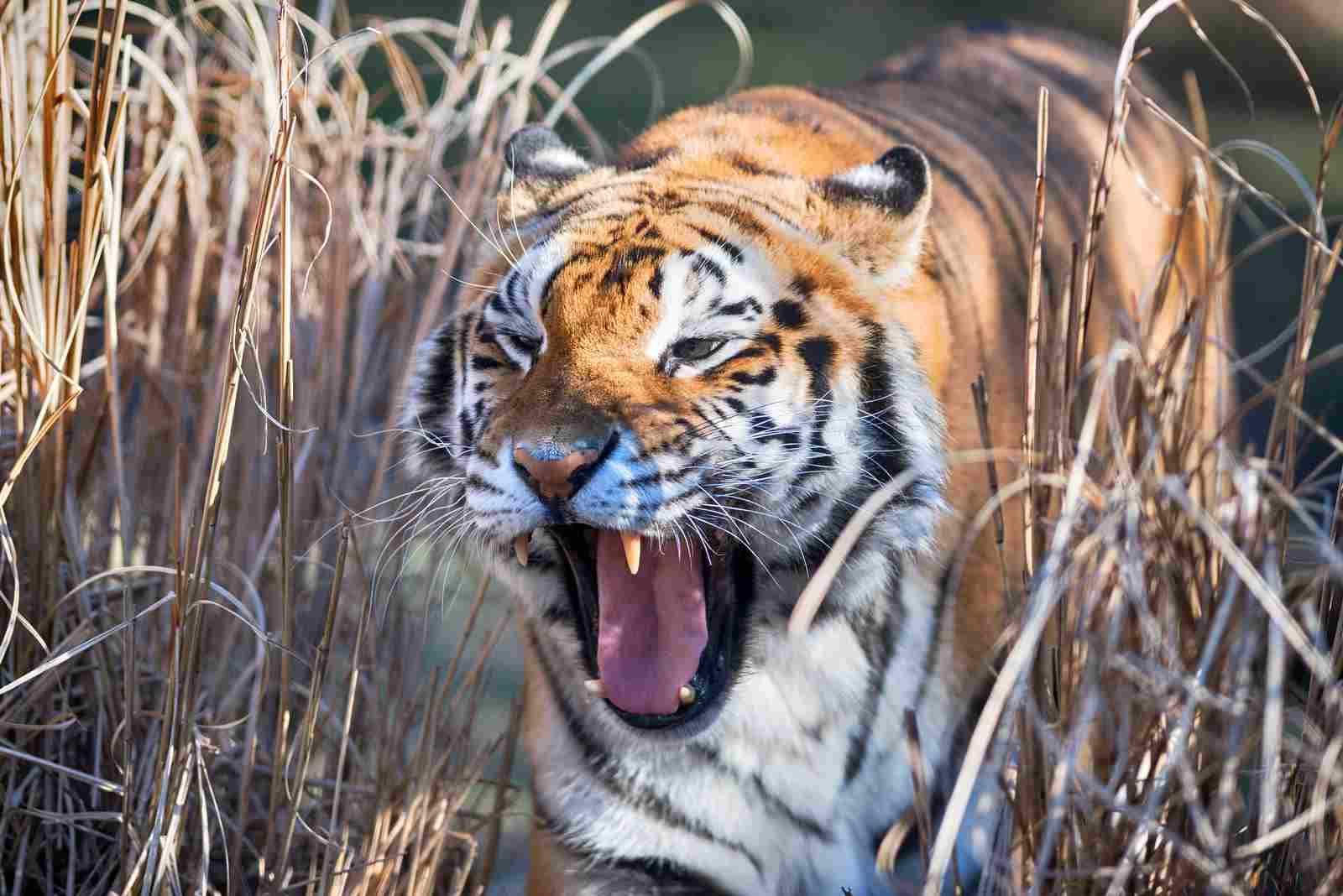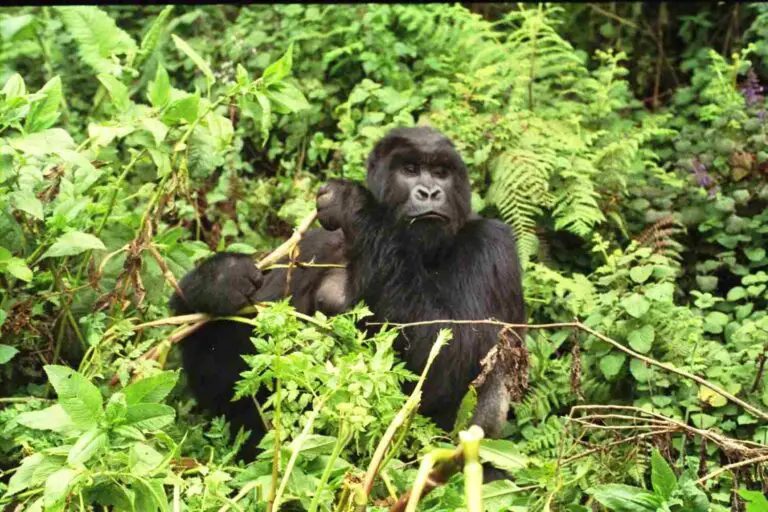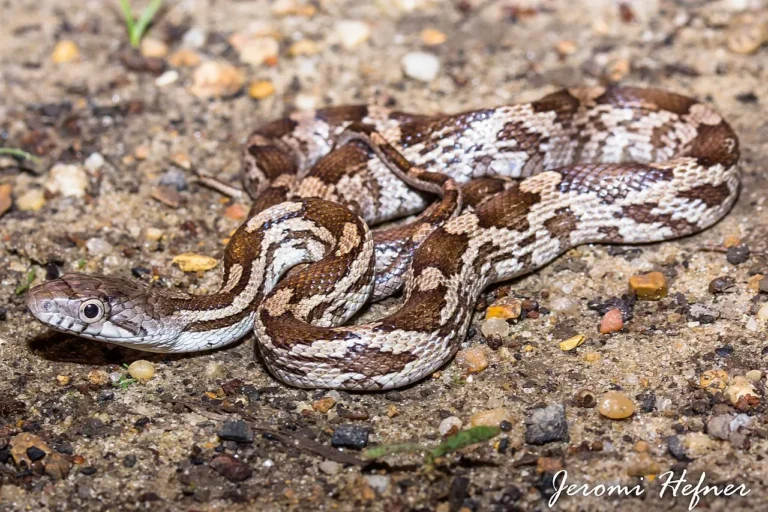Bobcat Vs Human Size, Weight, Overall Comparison
Considering a hypothetical confrontation between a bobcat and a human, we explore their respective characteristics to anticipate the potential outcome. This analysis takes into account their taxonomy, appearance, size, weight, agility, and the likelihood of aggression.
Bobcat vs Human: Assessing the Likely Victor in a Confrontation
In a theoretical encounter between a bobcat and a human, the human is likely to prevail in a fight due to superior size and weight, although the bobcat, known for its elusive nature, is very unlikely to attack humans. If a confrontation were to occur, the human’s advantages are evident despite the potential for severe injuries.
I). Unlikelihood of Bobcat Aggression:
– Bobcats are generally elusive and tend to avoid interactions with humans. Instances of bobcats attacking humans are rare, as these wild felines typically prioritize avoiding human contact.
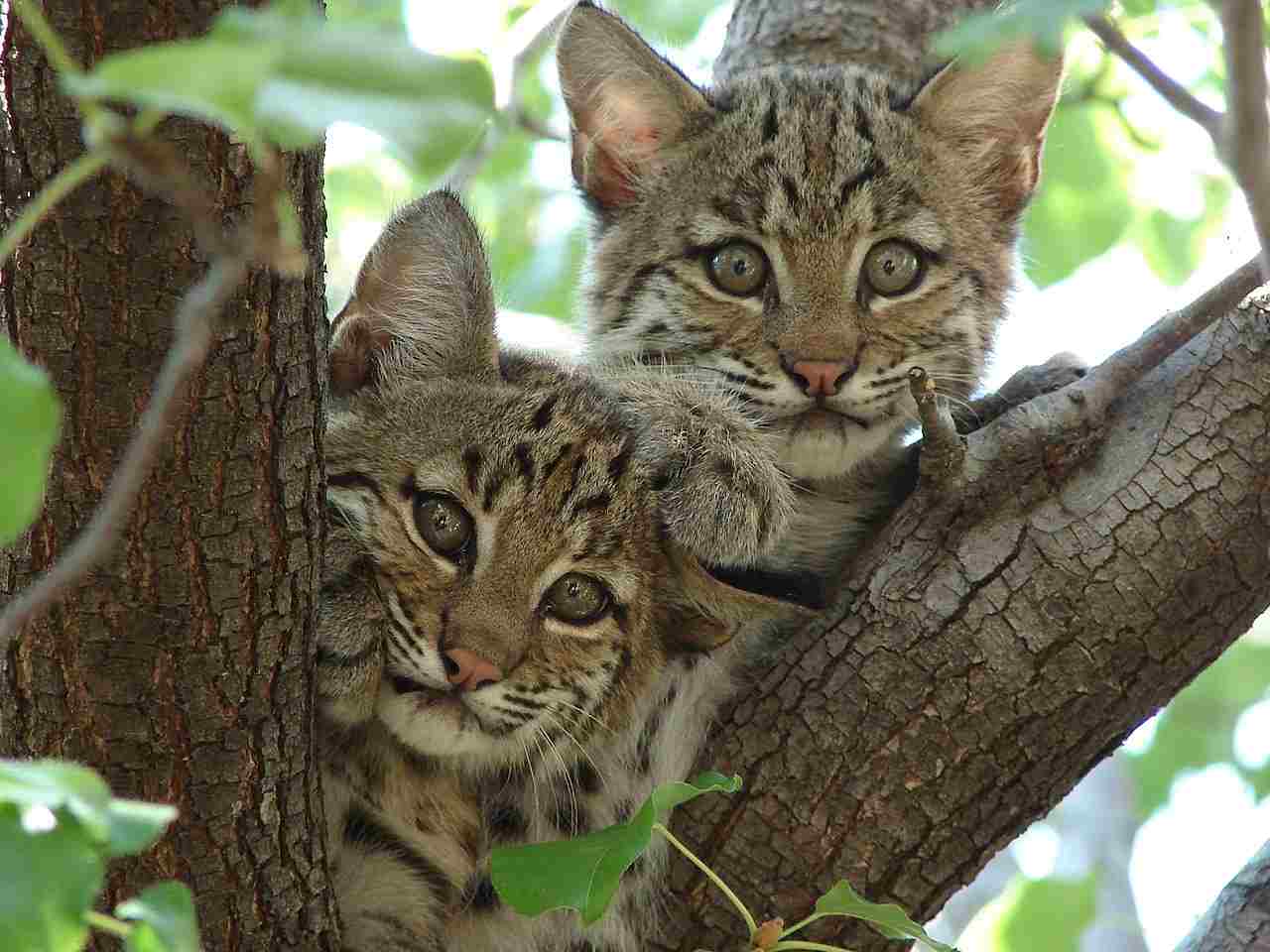
II). Superior Size and Weight:
– The human, being significantly larger and heavier than a bobcat, possesses a considerable physical advantage. This size and weight disparity provides the human with the ability to control the encounter and potentially fend off or subdue the bobcat.
III). Potential for Severe Injuries:
– Despite the human’s advantages, it’s important to note that a bobcat, if provoked or cornered, can inflict severe injuries with its sharp claws and teeth. The agility and defensive capabilities of the bobcat may pose a threat, and caution should be exercised in any such encounter.
IV). Overall Verdict:
– In a confrontation between a bobcat and a human, the human is likely to win due to superior size and weight. However, it’s crucial to emphasize that bobcats are generally not aggressive toward humans, and instances of such confrontations are infrequent. If a confrontation were to occur, the human’s physical advantages would provide a significant edge, although the potential for severe injuries from the bobcat’s defensive capabilities should be acknowledged.
*Details of Comparison
| Criteria | Bobcat | Human |
| Taxonomy | Felidae family, Lynx genus |
Hominidae family, genus and species- homosapiens
|
| Appearance | Distinct fur patterns, tawny to gray, pointed ears |
Diverse physical features, no fur, rounded ears
|
| Size | 28-40 inches (excluding tail) |
Varied, generally taller and larger
|
| Weight | 15-35 pounds |
Varied, generally heavier
|
| Bite Force | Not extensively documented |
Average 120-200 pounds
|
| Physical Offensive Advantages | Sharp claws, teeth, agility |
Tool use, strategic thinking
|
| Physical Defensive Advantages | Agility, speed, camouflage |
Cognitive abilities, social cooperation
|
| Speed | Up to 30 mph |
Average running speed 6-15 mph
|
| Agility | Excellent for climbing and navigating |
Good agility but not specialized for climbing
|
| Overall Physical Capacity | Specialized for survival, hunting |
Versatile physical and cognitive abilities
|
| Habitat Preference(s) | Varied habitats including forests, deserts |
Adaptable to urban, suburban, and rural areas
|
| Tracks | Distinctive paw prints |
Footprints with clear arch and heel imprints
|
| Lifespan | 7-10 years in the wild |
Average global lifespan approximately 72 years
|
| Mode of Feeding | Carnivorous, hunts through stalking |
Omnivorous, tool use for food preparation
|
| Social Behavior | Generally solitary |
Highly social, complex social structures
|
| Mode of Reproduction | Polygamous mating, litters of kittens |
Primarily monogamous, single offspring or twins
|
| Parental Behavior | Female cares for offspring, teaches hunting |
Both parents involved, extended parental care
|
| Proximity to Human-Inhabited Areas | Adaptable, may be seen near residential areas |
Inhabits diverse environments including urban areas
|
| Behavior Toward Humans | Elusive, avoids direct contact |
Varied, ranging from cooperation to conflict
|
| Danger Posed to Humans | Rarely poses threat to adults |
Can pose threats through various means
|
| Associated Precautions | Caution advised, avoid direct confrontation |
Diverse precautions depending on context
|
| Conservation Status | Least Concern by IUCN, stable populations |
Not assessed in the same conservation context
|
| Conclusion |
– Adaptability and challenges in human-inhabited areas are shared.
– Significant differences exist in taxonomy, physiology, behavior, and conservation considerations.
|
Key Points:
- Adaptability: Both species exhibit adaptability to diverse environments.
- Proximity to Humans: Both can be found in close proximity to human-inhabited areas.
- Conservation: Bobcats are assessed for conservation, humans are not evaluated in the same way.
- Physiological Differences: Bobcats and humans differ in size, weight, physical capabilities, and appearance.
- Behavioral Differences: Bobcats exhibit solitary and hunting-oriented behavior, while humans are highly social and diverse in behavior.
- Reproductive Differences: Bobcats tend towards polygamous mating, while humans have a range of mating systems.
- Parental Care: Humans invest significantly more time and resources in parental care compared to bobcats.
1. Taxonomy
Bobcat:
Kingdom: Animalia
Phylum: Chordata
Class: Mammalia
Order: Carnivora
Family: Felidae
Genus: Lynx
Species: rufus
Human:
Kingdom: Animalia
Phylum: Chordata
Class: Mammalia
Order: Primates
Family: Hominidae
Genus-Species: Homosapiens
2. Appearance
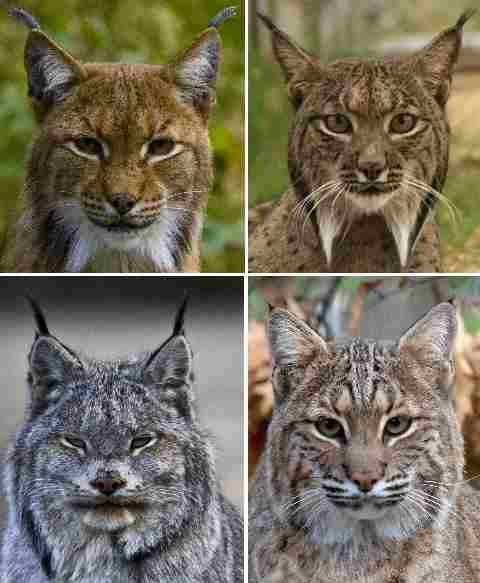
Bobcat:
Fur: Short, dense, tawny to gray with distinct spots and stripes.
Ears: Tuffed and pointed.
Tail: Short with a black tip.
Eyes: Yellowish or amber.
Human:
Varied physical appearances based on ethnicity, with diverse skin, hair, and eye colors.
No fur, but varying hair types.
Ears: Rounded without tufts.
Tail: Absent.
Eyes: Various colors.
Comparison: Bobcats have a distinct wildcat appearance with fur patterns for camouflage, while humans exhibit a wide range of physical features influenced by genetic diversity.
Ecological Implications: Bobcat appearances are adapted for camouflage in their natural environment, aiding in hunting and avoiding predators. Human variations may reflect adaptations to different climates and environments throughout our evolutionary history.
3. Size
Bobcat:
Length: 28 to 40 inches (excluding tail).
Height: 18 to 24 inches at the shoulder.
Human:
Varied sizes, with average height ranges from approximately 4.5 to 6.5 feet.
Comparison: Bobcats are significantly smaller than humans, both in height and overall body length.
Ecological Implications: Bobcats’ smaller size allows for enhanced agility in navigating their habitat, while humans’ larger size contributes to advantages in tool use, social cooperation, and adaptation to diverse environments.
4. Weight
Bobcat:
15 to 35 pounds.
Human:
Varied weights, with an average range of 100 to 200 pounds.
Comparison: Bobcats are considerably lighter than humans.
Ecological Implications: The bobcat’s lighter weight is advantageous for swift movement and climbing, essential for hunting and survival in their natural habitat. Humans’ higher weight contributes to strength, endurance, and diverse physical capabilities.
5. Bite Force
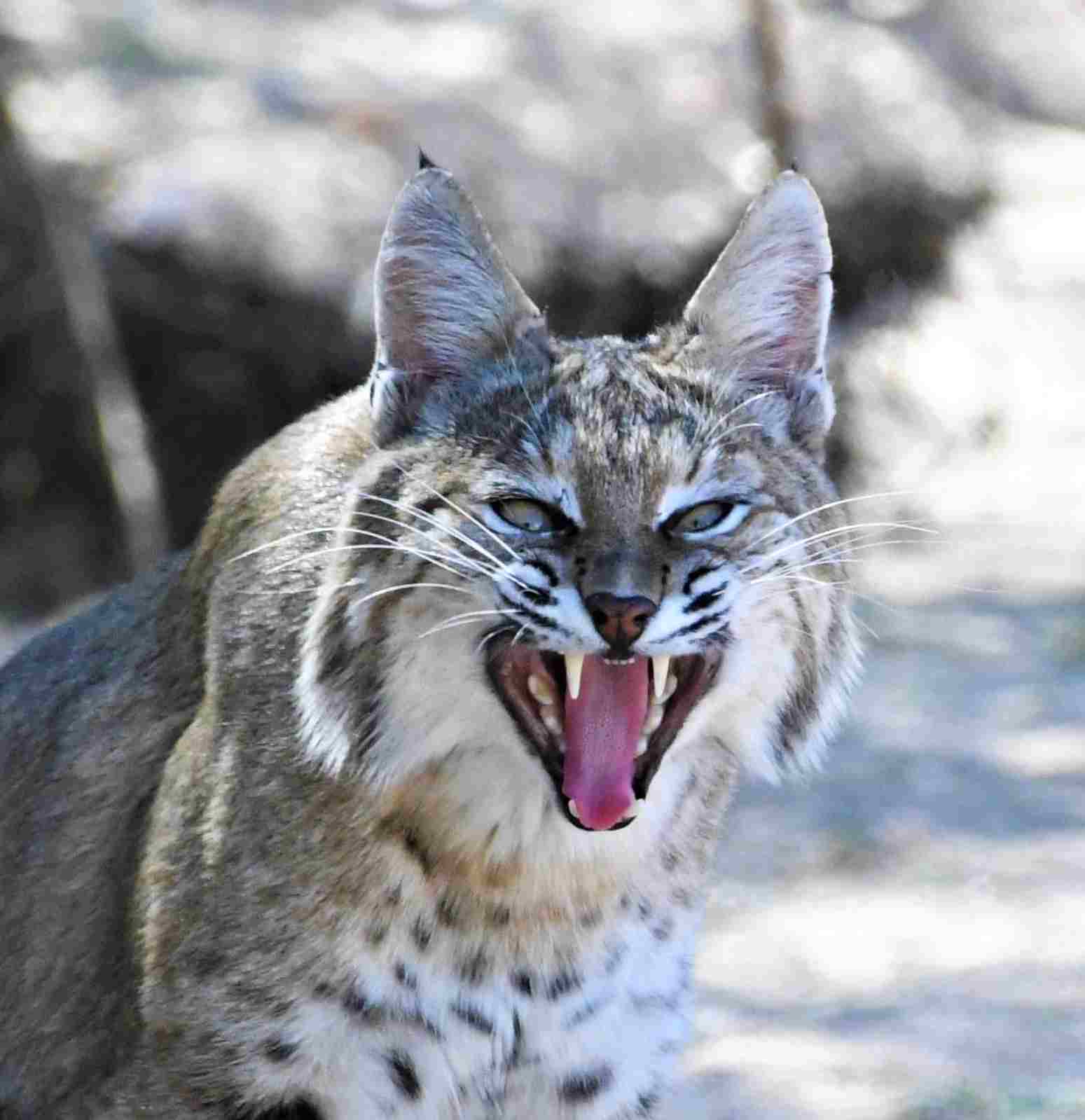
Bobcat:
Estimated bite force not extensively documented but sufficient for hunting and feeding on prey.
Human:
Average bite force ranges from 120 to 200 pounds.
Comparison: Humans generally possess a stronger bite force compared to bobcats.
Ecological Implications: Bobcats rely on their bite force for capturing and consuming prey, while humans’ bite force is more versatile, serving a broader range of purposes, including food consumption and tool usage.
6. Physical Offensive Advantages
Bobcat:
Sharp claws and teeth for effective hunting.
Enhanced stealth and agility for surprise attacks.
Human:
Tool use and creation for offensive purposes.
Complex problem-solving abilities.
Comparison: Bobcats rely on natural weaponry, while humans use tools and strategic thinking for offensive actions.
Ecological Implications: Bobcats’ physical advantages are adapted to their role as hunters, while human offensive capabilities extend beyond physical attributes, contributing to a broader ecological impact through technological innovation.
7. Physical Defensive Advantages
Bobcat:
Agility and speed for evading predators.
Camouflage and nocturnal behavior to avoid detection.
Human:
Cognitive abilities for planning and avoiding threats.
Social cooperation and the ability to create shelters and defenses.
Comparison: Both bobcats and humans exhibit defensive strategies, but they differ in the methods employed.
Ecological Implications: Bobcats’ natural defenses are crucial for survival in the wild, while humans’ cognitive and social abilities contribute to creating protective environments and adapting to various ecological challenges.
8. Speed
Bobcat:
Can reach speeds of 30 miles per hour.
Human:
Average running speed ranges from 6 to 15 miles per hour.
Comparison: Bobcats are significantly faster runners than humans.
Ecological Implications: Bobcats’ speed is essential for hunting and evading predators, reflecting their role in the ecosystem as agile carnivores. Humans, with moderate running speeds, rely more on endurance and cognitive capabilities for survival.
9. Agility

Bobcat:
Exceptional agility for climbing trees and navigating diverse terrains.
Human:
Good agility but not as specialized for tree climbing.
Comparison: Bobcats excel in tree climbing and navigating rough terrain due to their specialized anatomy.
Ecological Implications: Bobcats’ agility contributes to their hunting and survival skills in varied environments. Humans, while agile, rely on a combination of agility and adaptability to navigate diverse landscapes and ecosystems.
10. Overall Physical Capacity
Bobcat:
Specialized for stealthy movement, hunting, and survival in natural habitats.
Tailored for climbing and ambushing prey.
Human:
Versatile physical and cognitive abilities.
Adaptability and tool use for various tasks.
Comparison: Bobcats possess specialized physical capacities for survival in the wild, while humans have a broader range of capabilities.
Ecological Implications: Bobcats’ specialized capacities contribute to their role as predators, influencing prey populations. Human versatility allows for a more significant impact on ecosystems through various activities, including resource utilization and modification.
11. Habitat Preference(s)
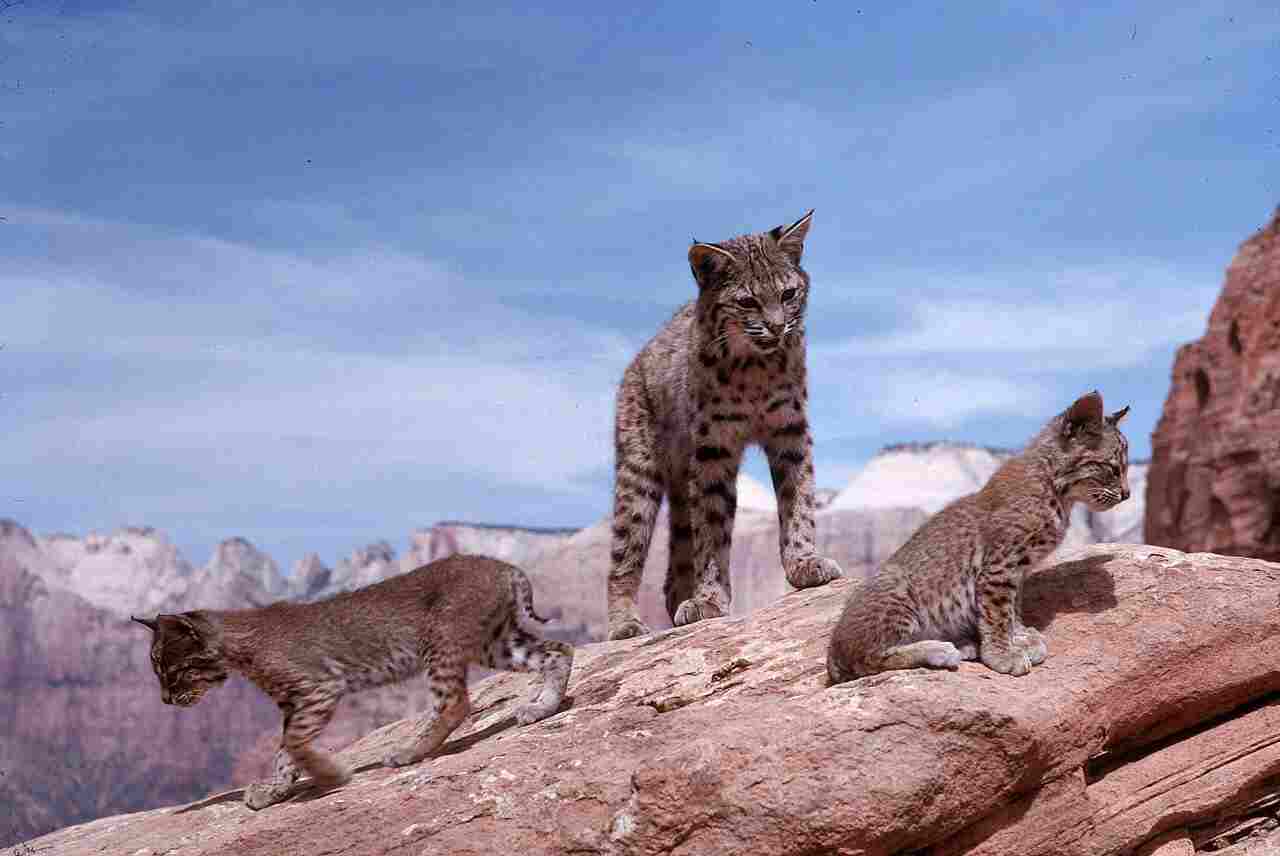
Bobcat:
Varied habitats, including forests, deserts, and swamps.
Human:
Extremely adaptable, occupying diverse environments globally, from polar regions to tropical forests.
Comparison: While both species exhibit adaptability, humans have a broader range of habitat preferences.
Ecological Implications: Bobcats’ adaptability is crucial for surviving in specific ecosystems, contributing to ecological balance. Human adaptability influences the modification and transformation of diverse habitats, impacting ecosystems globally.
12. Tracks
Bobcat:
Distinctive paw prints with retractable claws visible.
Human:
Footprints with clear arch and heel imprints.
Comparison: Bobcat tracks reveal retractable claws, while human tracks show distinctive features related to bipedal locomotion.
Ecological Implications: Tracking bobcat prints aids in understanding their movements and behaviors in the wild. Human footprints are indicative of our terrestrial nature and are essential in studying our historical presence in different environments.
13. Lifespan
Bobcat:
Average lifespan of 7 to 10 years in the wild.
Human:
Average global lifespan of approximately 72 years.
Comparison: Humans have a significantly longer lifespan compared to bobcats.
Ecological Implications: The bobcat’s shorter lifespan impacts population dynamics and predator-prey relationships in ecosystems. Human longevity influences various aspects of resource consumption, environmental impact, and cultural development over extended periods.
14. Mode of Feeding
Bobcat:
Carnivorous diet, preying on small mammals, birds, and occasionally larger prey.
Hunts through stalking and ambush techniques.
Human:
Omnivorous diet, incorporating plant and animal-based foods.
Utilizes tools and cooking methods for food preparation.
Comparison: Bobcats are strict carnivores with specialized hunting techniques, while humans are omnivores with a wide range of dietary adaptations.
Ecological Implications: Bobcats’ carnivorous habits regulate prey populations, contributing to ecological balance. Humans’ dietary flexibility and tool use have led to diverse impacts on ecosystems through agriculture, hunting, and food production.
15. Social Behavior
Bobcat:
Generally solitary except during mating and raising young.
Territories marked and defended.
Human:
Highly social, with complex social structures.
Collaboration and communication are integral to daily life.
Comparison: Bobcats exhibit solitary behavior, whereas humans are highly social beings.
Ecological Implications: Bobcats’ solitary nature reduces competition within their species, while human social structures contribute to complex societies with varied ecological impacts.
16. Mode of Reproduction
Bobcat:
Polygamous mating system.
Females give birth to a litter of kittens.
Human:
Primarily monogamous, with variations.
Females give birth to a single offspring or occasionally twins.
Comparison: Bobcats tend towards polygamous mating, while humans exhibit a range of mating systems with a tendency towards monogamy.
Ecological Implications: Bobcats’ reproductive strategies contribute to population dynamics and genetic diversity within the species. Human reproductive behaviors have broader implications on population growth, family structures, and societal organization.
17. Parental Behavior
Bobcat:
Female takes care of the offspring, teaching hunting skills.
Young become independent after several months.
Human:
Both parents typically involved in raising offspring.
Extended period of parental care and education.
Comparison: Bobcats have a shorter period of parental care, while humans invest significantly more time and resources in raising their offspring.
Ecological Implications: Bobcats’ parenting behaviors are adapted to their relatively short lifespan and hunting skills. Human parenting impacts societal structure, education, and cultural transmission over an extended period.
18. Proximity to Human-Inhabited Areas
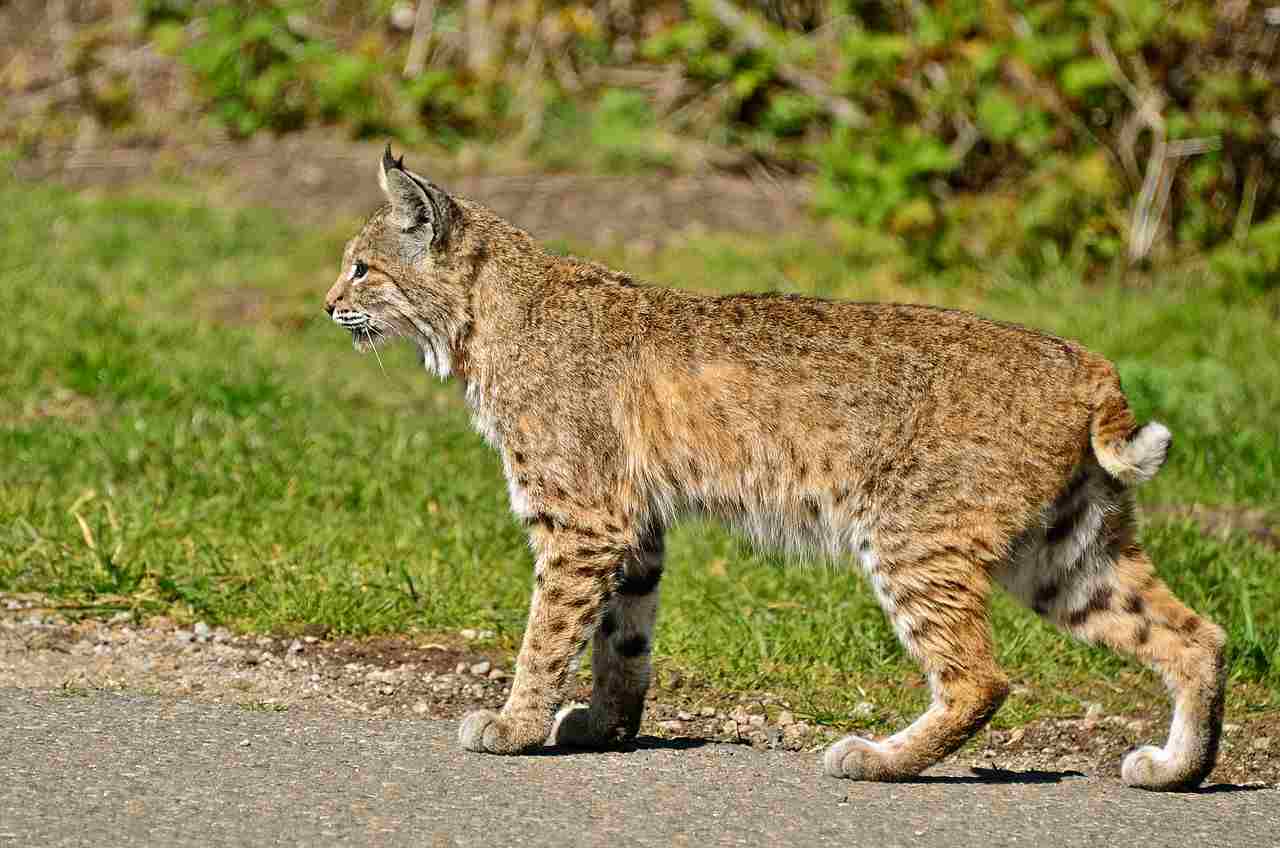
Bobcat:
Can adapt to suburban areas, particularly where natural habitats intersect with human development.
May be spotted near residential neighborhoods.
Human:
Inhabits diverse environments, including urban, suburban, and rural areas.
Comparison: Both bobcats and humans can be found in close proximity to human-inhabited areas.
Ecological Implications: Bobcats adapting to human environments may lead to human-wildlife conflicts, impacting local ecosystems. Human presence in various habitats influences biodiversity and ecological balance.
19. Behavior Toward Humans
Bobcat:
Generally elusive and avoids direct contact with humans.
Can become more visible in search of food.
Human:
Varied behavior, ranging from cooperation to conflict.
Humans may alter habitats and impact wildlife inadvertently.
Comparison: Bobcats tend to avoid direct contact, while human behavior towards wildlife varies.
Ecological Implications: Bobcats’ avoidance behavior helps maintain a natural balance, while human activities can affect wildlife through habitat modification and direct interactions.
20. Danger Posed to Humans
Bobcat:
Rarely poses a threat to adult humans.
May become more aggressive if cornered or protecting young.
Human:
Can pose threats to each other through violence, disease transmission, or environmental impact.
Comparison: Bobcats are generally not a direct threat to humans, while human actions can have various impacts on their own and other species.
Ecological Implications: Bobcats’ minimal threat to humans contributes to a balanced ecosystem, while human activities can pose significant dangers to various species and ecosystems.
21. Associated Precautions
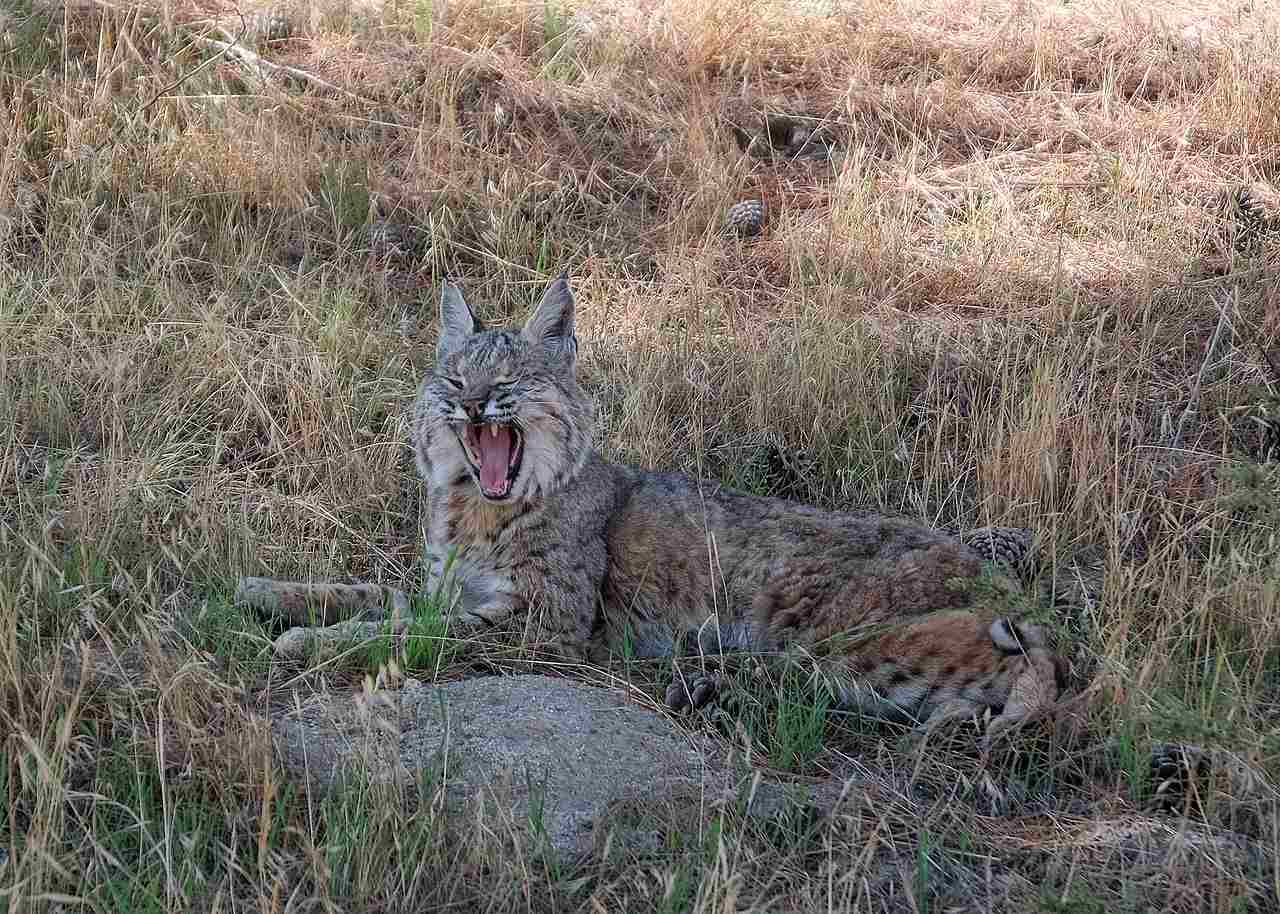
Bobcat:
Caution advised in areas with known bobcat presence.
Keep a safe distance and avoid direct confrontation.
Human:
Diverse precautions depending on the context, including safety measures, conservation practices, and sustainable living.
Comparison: Both bobcats and humans require precautions to ensure safety and coexistence.
Ecological Implications: Precautions around bobcats help maintain their wild behavior and prevent conflicts. Human precautions are essential for minimizing ecological impacts and fostering harmonious coexistence with other species.
22. Conservation Status
Bobcat:
Generally considered a species of “Least Concern” by the International Union for Conservation of Nature (IUCN).
Populations stable, but local threats such as habitat loss and hunting can impact regional populations.
Human:
Not assessed in the same conservation context as wildlife.
Human populations are managed through social, economic, and political measures.
Comparison: Bobcats are evaluated for conservation status, whereas humans are not assessed in the same way due to their distinct social and ecological context.
Ecological Implications: Bobcat conservation efforts focus on preserving wild habitats, while human populations are managed through societal and political frameworks.
Summary of Comparison
In summary, bobcats and humans differ significantly across various criteria:
Similarities:
Both species exhibit adaptability to diverse environments.
Proximity to human-inhabited areas can lead to interactions and challenges for both.
Differences:
1. Taxonomy:
Bobcats belong to the Felidae family, while humans are in the Hominidae family.
2. Appearance:
Bobcats have distinctive fur patterns for camouflage, while humans show a wide range of physical features.
3. Size:
Bobcats are significantly smaller than humans.
4. Weight:
Bobcats are considerably lighter than humans.
5. Bite Force:
Humans generally possess a stronger bite force than bobcats.
6. Physical Offensive Advantages:
Bobcats rely on natural weaponry; humans use tools and strategic thinking.
7. Physical Defensive Advantages:
Bobcats use agility and camouflage; humans rely on cognitive abilities and social cooperation.
8. Speed:
Bobcats are faster runners than humans.
9. Agility:
Bobcats excel in tree climbing and rough terrain navigation.
10. Overall Physical Capacity:
Bobcats have specialized capacities for survival, while humans have a broader range of abilities.
11. Habitat Preference(s):
Humans have a broader range of habitat preferences.
12. Tracks:
Bobcat tracks reveal retractable claws; human tracks show distinctive bipedal features.
13. Lifespan:
Humans have a significantly longer lifespan than bobcats.
14. Mode of Feeding:
Bobcats are strict carnivores; humans are omnivores with tool use.
15. Social Behavior:
Bobcats are solitary; humans are highly social.
16. Mode of Reproduction:
Bobcats tend towards polygamous mating; humans exhibit a range of mating systems.
17. Parental Behavior:
Bobcats have a shorter period of parental care; humans invest significantly more time and resources.
18. Proximity to Human-Inhabited Areas:
Both can be found in close proximity to human-inhabited areas.
19. Behavior Toward Humans:
Bobcats tend to avoid direct contact; human behavior towards wildlife varies.
20. Danger Posed to Humans:
Bobcats rarely pose a direct threat; human actions can have various impacts.
21. Associated Precautions:
Both require precautions for safety and coexistence.
22. Conservation Status:
Bobcats are assessed for conservation; humans are not evaluated in the same way.
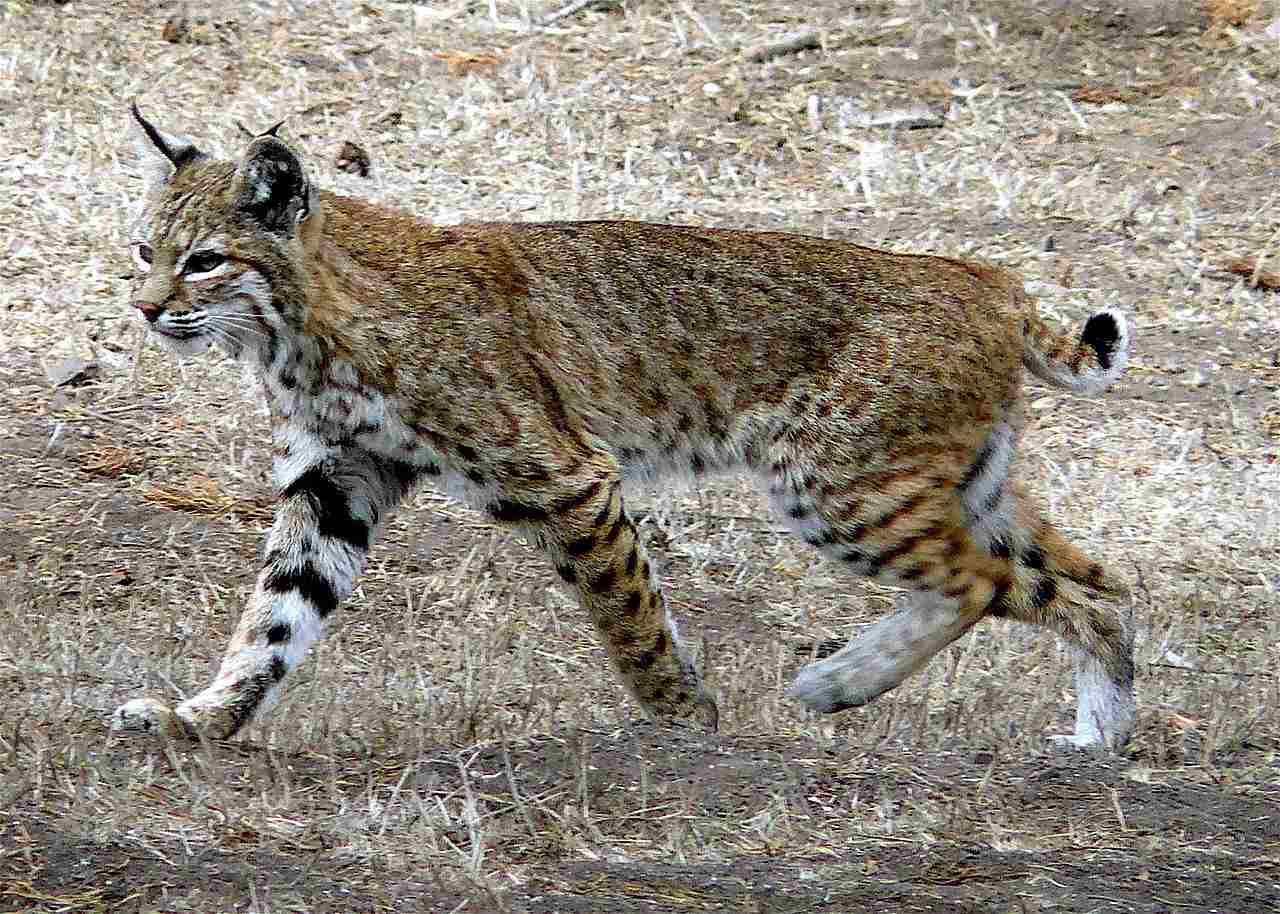
Conclusion
I. Similarities:
Both bobcats and humans exhibit adaptability to various environments.
Proximity to human-inhabited areas can lead to interactions and challenges for both species.
II. Differences:
Bobcats have specialized physical and behavioral adaptations for survival in the wild, while humans rely on a combination of physical, cognitive, and cultural adaptations.
Conservation considerations for bobcats are specific to their role in ecosystems, while human management involves complex societal and political dynamics.
